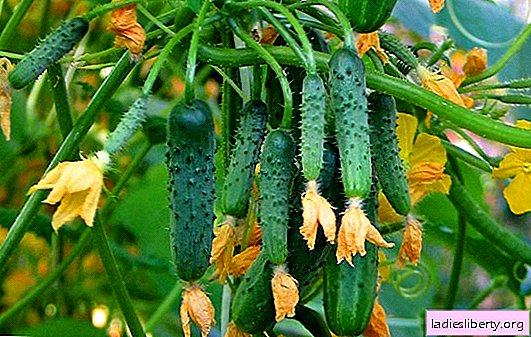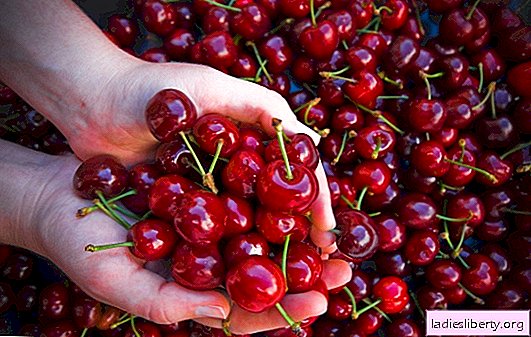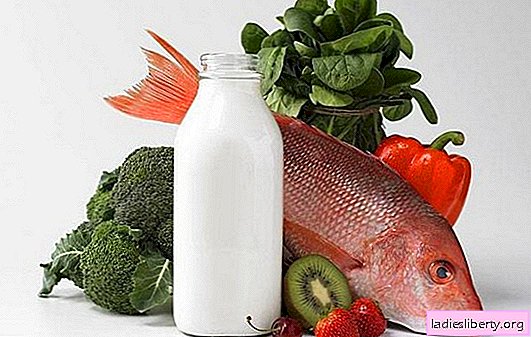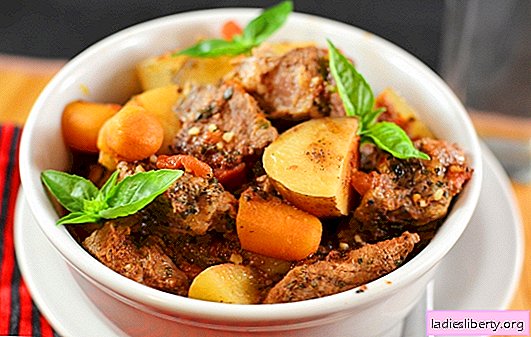
The yield of cucumber culture depends on the correctly selected seed material and agricultural farming technique. Today, many varieties of cucumbers are bred, which give a good harvest, despite the weather conditions. Such greens can be grown in any region of the country. We will get acquainted with the most common varieties and hybrids.
Description and characteristics of fruit varieties of cucumbers for open ground
Cucumbers are heat-loving crops with a short growing season, so during the summer season the gardener needs to collect the maximum yield. However, weather conditions are not always encouraging, the fruits are not tied due to frequent rains or burn in the sun. Hybrid self-pollinated varieties will come to the rescue. These are stress-resistant varieties that do not require shoulder pollination, rarely get sick and give a stable crop in all weather conditions.
Early varieties of cucumbers for open ground
Early cucumbers are usually grown for salads, but among modern varieties there are universal greens. They are planted not only in spring, but also in autumn. Warm weather allows you to extend the cucumber season.

The most favorite among gardeners remains the cucumber "April". Fruiting begins 50 days after planting. Zelentsy are large, up to 25 cm in length, slightly ribbed. It is not difficult to grow them, the plant weakly branches, there is no need for pruning. Resistance to diseases is high. The average yield at 22 kg per 1 square. m. beds. When polluted, productivity rises by 30%.

The hybrid variety "Claudia" is distinguished by a friendly return of fruits and a long period of fruiting. The first crop ripens in 45-50 days. This is a universal variety. Zelentsy are fragrant with dense pulp, small, up to 10 cm long, without bitterness. Suitable for fresh consumption and pickling. The crop does not overripe on the bushes, retains its presentation for a long time, and tolerates transportation well. With 1 sq. m. beds can collect up to 25 kg of fruit. Recommended to grow on a trellis.
Variety "Friendly family" was loved by gardeners with their greens. These are small fruits of green color with a white stripe. The weight of cucumbers is not more than 80 gr. The pulp is dense, with a pleasant taste. A variety of universal purpose with a bouquet type of ovary. Several leafy greens are formed from the leaf sinus. The first of them ripen 40-45 days after planting. Productivity at the level of 20 kg from 1 sq. m. beds. To increase the yield, they need to be pinched and trimmed.
Mid-ripe varieties of fruitful cucumbers
Among the mid-early varieties can be distinguished:
· "Brownie";
· "Dear".
These are bee pollinated hybrids with high yields and good immunity.
Variety "Brownie" begins to bear fruit after 55 days from germination. Bushes are medium-braided, do not require special care. Zelentsy pimply, no more than 8 cm long. The pulp is dense, without bitterness, and crunchy. The variety is suitable for fresh consumption and conservation, rarely sick. Productivity at the level of 15 kg from 1 sq. m. beds, fruiting extended, Zelentsy sing until the fall.
Hybrid "Dear" is distinguished mainly female type of flowering, requires pollination by bees. Productivity is high, fruits are up to 10-11 cm long, green in color with a white stripe. The pulp is without bitterness, the skin is dense. Cucumbers are suitable for preservation and pickling. Bushes are vigorous, need support, resistant to a number of diseases. Recommended planting density 4 plants per 1 square. m
Late ripe harvesting varieties of cucumbers
When choosing late-ripening varieties, it should be borne in mind that seeds give friendly seedlings only after 3 years. Fresh seeds are not used for planting. The growing region is also important, since the crop takes more than 65 days to form.
Variety "Winner" is characterized by powerful bushes that tolerate cold snap and drought, rarely suffer from fungal diseases and give a good harvest. Zelentsy are large, up to 14 cm in length, average weight is about 100 g. Suitable for fresh consumption and preservation. Productivity at 10 kg per 1 sq. Km. m. beds.

Farmer cucumbers are considered high-yielding among later varieties. With 1 sq. m. beds manages to collect more than 15 kg of fruit. Zelentsy is not hot, suitable for preservation, pickling and fresh consumption. The average weight of fruits is more than 200 gr.
Self-pollinated crop varieties of cucumbers for greenhouses
The presence of the greenhouse allows you to extend the cucumber season. Thanks to the necessary temperature and lighting, you can grow a good crop of marketable greens. It is best to give preference to self-pollinating hybrids.
The high-yielding hybrid "Goosebump" is considered the best among greenhouse cucumbers. Fruiting occurs on the 35th day after planting. The bushes are medium-sized, a type of ovary bunch. The plant is resistant to various diseases, rarely affected by pests. Zelentsy coarse-humped with black pimples, retain good taste when preserved. The average weight of cucumbers is up to 100 g, length is about 8 cm.
The variety "Emelya" is characterized by a bunch type of ovary and mainly female flowers. The plant is vigorous, tolerates a decrease in temperature, rarely gets sick, does not lose its taste when harvested late. Fruiting occurs 35-40 days after planting. Fruits are large, up to 15 cm in length, saturated green, are used for the preparation of salads, for preservation they are not entirely suitable.
The hybrid variety "Ant" begins to bear fruit on the 35th day of cultivation. Fruits up to 10 cm long, tuberous, green. The pulp is dense, without bitterness. The plant is characterized by weak growth and a bundle type of ovary, does not require special care. The fruiting period is short, the yield is good. Zelentsy retain their color after preservation and in pickling.
How to increase the yield of varieties and grow cucumbers correctly
If you find it difficult to choose a variety, then listen to the advice of experienced gardeners.
· Decide what the greens will be used for. It depends on which seeds to choose: salad or universal.
· Prefer hybrids that are less affected if the climate in the region is unstable.
· Remember that in the conditions of short and cold summers it is better to plant early greenhouse varieties, it is better to refuse varieties for open ground.
· In the open ground it is possible to plant bee pollinated and parthenocarpic varieties, but for the greenhouse it is better to use the latter.
· Grow several varieties at once in order to guarantee a good harvest and compare indicators in the same conditions.
In addition, remember that self-pollinated hybrids retain germination for about 10 years, but after 5 years of storage, the yield from such plants is much lower. Carefully study the packaging with the seeds before buying.
Before planting, check the seeds for germination and discard empty ones. Dip them in salted water, and boldly throw everything that comes up to the surface. It will not be superfluous to soak and disinfect the seeds or purchase already processed ones.

To increase the yield will have to work hard. After planting seeds in the ground and the emergence of seedlings, the root system of the plant will have to be constantly maintained. At the beginning of the growing season, normal hilling is sufficient; as the growth grows, the bare roots will have to be covered with a nutrient substrate or humus.
Once a week, you need to water the beds and make fertilizing. Fertilizers with nitrogen should not be used during the formation of ovaries, it is better to use phosphorus-potash. A good prophylaxis of diseases will be top-feeding on a sheet with a 1: 1 solution of milk and water. Do not forget to loosen the topsoil and mulch the soil under the plants, for which they will reward a rich harvest.











